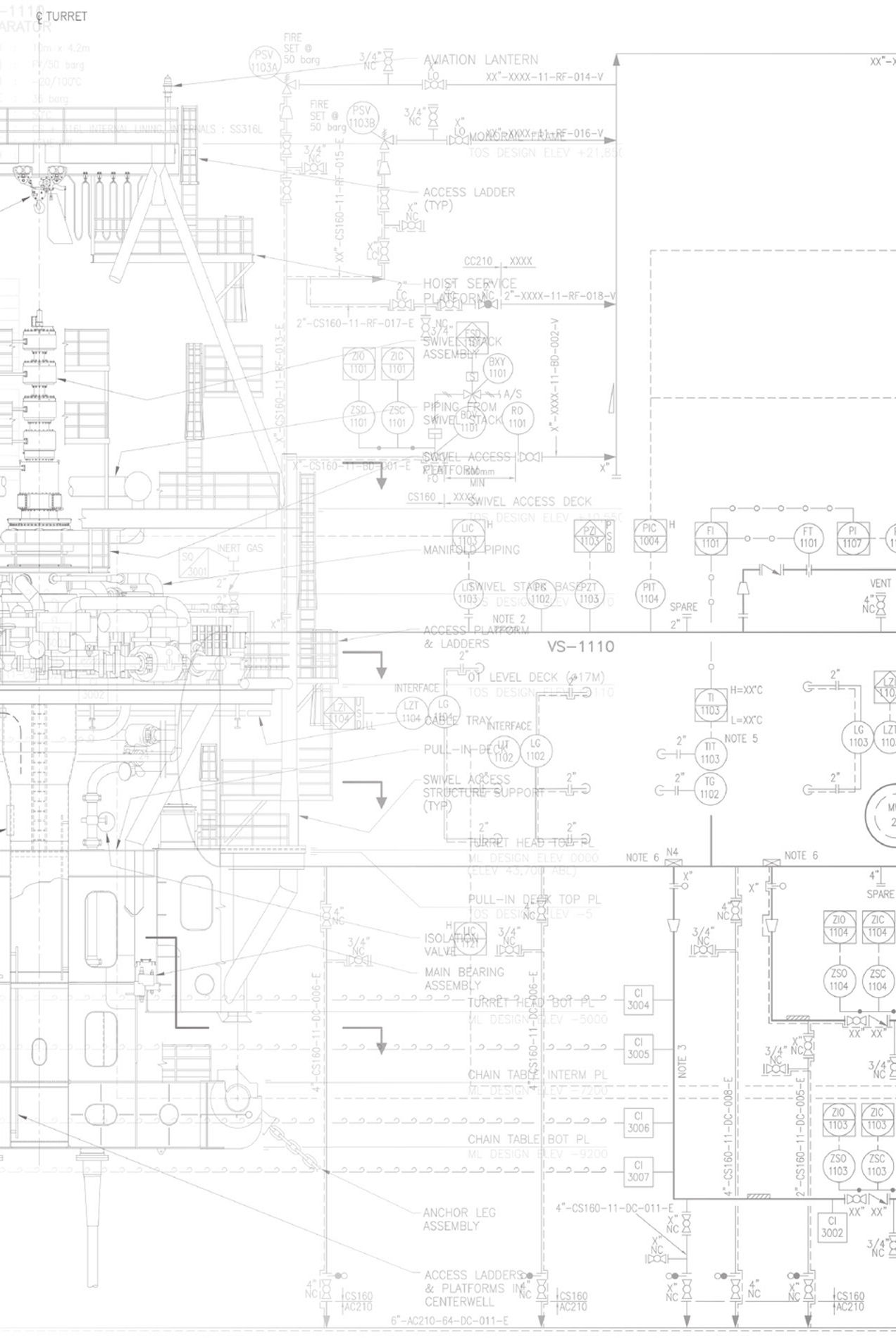
Survey & Scanning Solutions
3D Laser scan surveys are conducted for the purpose of performing retro-fits and upgrades on both onshore and offshore assets and facilities. CAD models generated by laser scan surveys allow engineers and designers to make necessary changes in a safe environment, with the knowledge that new components will fit into the desired location upon initial installation without interference to other components. This, linked to both a full coupled legacy data base and onsite Augmented Reality tablets, provide improved accuracy and safety for all inspection and modifications whilst at work.
3D laser scanning will enhance engineering accuracy, shorten project schedules, and improve coordination between project teams and manufacturers

How a 3D Laser Scanner Works
A 3D scanner projects a laser onto a surface, which is then reflected back to the scanner. The scanner will analyse and compare the differences in reflected light frequency and the phase shift of the reflected wavelength to determine the object’s position in 3D space.
The 3D scanner contains an internal mirror that rotates vertically in a full circle. In addition, the scanner will rotate horizontally in a full circle. This combination of a vertically- rotating mirror and horizontally rotating scanner produces a 3D point cloud in a sphere emanating from the scanner.


Using 3D Laser Scanning in Plant Design
The purpose of a point cloud is to collect data-point information from all sides of an object. To do this, the scanner collects data information from multiple positions around that object. After completing the initial scan, the 3D scanner performs a second 360-degree rotation. During this event, the scanner will take color photographs of the previously scanned area, from the same view point. Each scan will include over 85 color photos, which can be used by both the engineering team and the manufacturer to relay visual information to team members who are not on site, and to facilitate and coordinate design discussions. These photos can then be overlaid on the point cloud model to create an accurate 3D image as you would see it on site
Point Cloud Registration
Each Scan Location records a unique Point Cloud seen from the viewpoint of the Laser Scanner. In order to create a full 3D Point Cloud representation of the entire facility, each scan is “stitched” together utilising the recognition of common object surfaces and the Survey Targets. This process is referred to as Registration. The key steps for the registration process are:
-
Preprocessing
-
The first stage of point cloud registration involves removing noise and data outliers while preserving the clarity of features. This process can improve the clarity of the data and reduce the chance of outliers or noise interfering with data analysis. During this stage, organizations can also choose to downsample the point cloud data sets (reduce the density of the point clouds by removing some data points) or delete data from unwanted features. This can speed up the point cloud registration process and create a more focused and concise dataset. However, for projects requiring a lot of detail from large areas, this isn’t always a good idea.
-
-
Registration and Alignment
-
Once point cloud data has been cleaned up and refined, these datasets are “stitched” together – with the registration software – using survey targets, control coordinates, common planes and/or notable features as points of reference. After this process, the point cloud data sets should be tightly calibrated, and the pixels should be aligned. Once the point cloud model has been verified and the scans registered together, it can be used for building an “As Is” CAD model in 3D.
-
